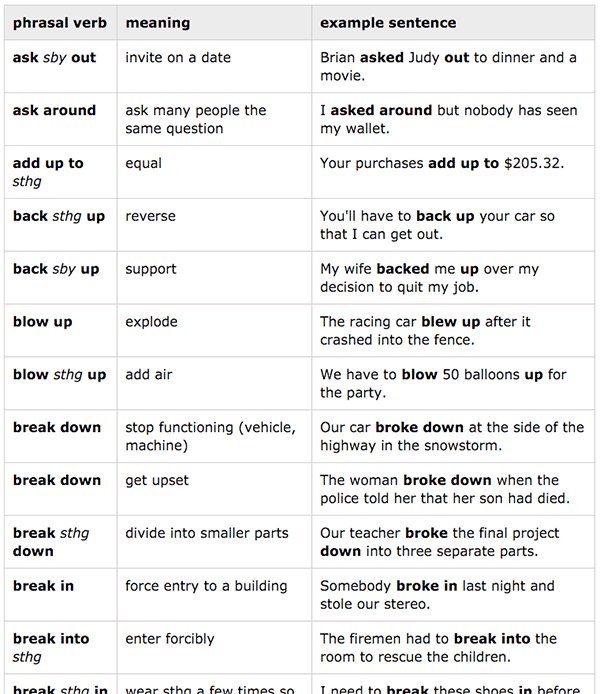Phrasal Verbs In Sentences
A phrasal verb is a verb that is made up of a main verb together with an adverb or a preposition, or both. Typically, their meaning is not obvious from the meanings of the individual words themselves. For example:
Phrasal verbs can also be learned in context by relating synonyms to the new phrasal verbs you learn. Here is a series of exercises that provides listening examples from which you match the phrasal verb to its definition or synonym. Separable phrasal verbs. The object may come after the following phrasal verbs or it may separate the two parts: I turned off the light. I turned the light off. You have to do this paint job over. When the object of the following phrasal verb is a pronoun (it / them / me / you / him / her / us), the two parts of the phrasal verb must be separated.
She has always looked down on me.
Fighting broke out among a group of 40 men.
I’ll see to the animals.

Don’t put me off, I’m trying to concentrate.
The report spelled out the need for more staff.
For instance, in the first example, the phrasal verb ‘to look down on someone’ doesn’t mean that you are looking down from a higher place at someone who is below you; it means that you think that you are better than someone.
Transitivity
Phrasal verbs can be intransitive (i.e. they have no object):
We broke up two years ago.
They set off early to miss the traffic.
Irregular Verbs In Sentences
He pulled up outside the cottage.
Phrasal Verbs And Meanings
or transitive (i.e. they can have an object):
The police were called to break up the fight.
When the door is opened, it sets off an alarm.
They pulled the house down and redeveloped the site.
Word order
The verb and adverb elements which make up intransitive phrasal verbs are never separated:
✓ We broke up two years ago.
✗ We broke two years ago up.
The situation is different with transitive verbs, however. If the direct object is a noun, you can say:
| ✓ They pulled | the house | down. |
| [direct object] | ||
| ✓ They pulled down the house. | ||
If the object is a pronoun (such as it, him, her, them) , then the object always comes between the verb and the adverb:
| ✓ They pulled | it | down. |
| [direct object] | ||
| ✗ They pulled down it. | ||
Back toVerbs.